Everything is Bigger in Texas
- Aaron Schorr
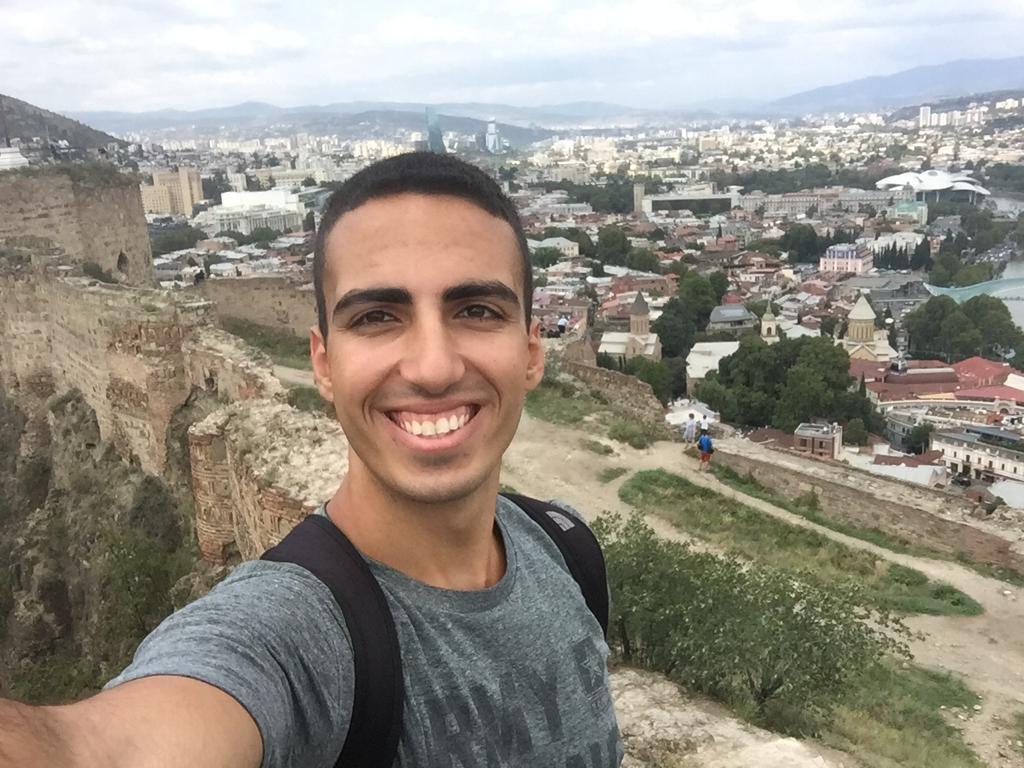
- Jan 20, 2021
- 16 min read
Scale takes on a new meaning in Texas. The next sizable city to the west of Texarkana is Dallas, 180 miles further down I-30. We made a snap executive decision to push onwards and make it to Dallas that night, for which we would reward ourselves with an entire day’s rest in the city the following day. Right off the bat, driving in Texas feels different. The highway interchanges are massive, every overpass is marked with a Lone Star and an outline of the state, even the sun seemed to shine brighter.
We stopped to charge in a strip mall on the Texan side of Texarkana, where the change in scale was instantly apparent. There was a bookstore in the strip mall where we wanted to pass the time, but getting to it was a 10-minute trek through an endless expanse of asphalt. The entire mall was a massive parking lot interspersed with stores that looked like small islands in comparison. Strip malls are by definition heavy on parking, but this felt like a step up. It was delightfully sunny and warm, and I couldn’t imagine how miserable it must be in summer.
According to Jake and other Texan friends of mine, the two quintessential Texas experiences for a first-time visitor are Whataburger and Buc-ee's, so we made those our priorities on the drive to Dallas. Whataburger (pronounced “water-burger”) is a Texan burger chain locals claim is by far the best in the country. I don’t eat fast food burgers, so I didn’t really have what to compare it to, but Jake was very excited by it.
We had to charge in the town of Sulphur Springs and had our meals while the car charged in the parking lot of the local police station. We walked down Main Street and sat to eat in the town square, both of which were surprisingly cute for a place we stumbled upon accidentally. The brown adobe buildings, reminiscent of Florida, heralded our return to the Gulf region. As we walked back to the car, a middle-aged woman nodded at us and said sternly, “you boys behave yourselves.” I thought we were in trouble, but apparently this is a normal greeting in Texas.

Capitalism Delivered
The sun was already below the horizon when we left Sulphur Springs, but we continued driving into the beautiful sunset for nearly an hour, chasing the sun heading due west at a flat speed of 85 mph.

The next stop was in Royse City, 45 miles further to the west. This was home to a Buc-ee’s, our other immediate order of business. The first thing we saw when we arrived was the attached gas station, which must have had at least 60 pumps and was the length of a city block. The interior was even more shocking, though. Buc-ee’s is officially a convenience store, but that doesn’t tell the whole story. Take a convenience store, make it the size of a supermarket (an American one, that is), and you’ll have a reasonable idea of what Buc-ee’s is.
A coffee bar with enough sweeteners and syrips to kill an African village of diabetes? Check. Sixteen kinds of fudge cubes? Check. An entire section devoted to cheesy Texas and Buc-ee’s brand souvenirs? But of course. The place was a shrine to capitalism, but unlike so many other American institutions, it actually managed to deliver on the promises of capitalism: incredible variety and rock-bottom prices. The adverse health effects of this particular brand of American consumerism were plain to see, as we were by far the skinniest people in the store. Ask any Texan what their favorite part of Buc-ee's is, however, and you’re bound to get the same answer: the bathrooms. Indeed, the bathrooms were something to behold. Not only for their scale - I have never seen so many urinals lined up on a wall - but for their phenomenal cleanliness. After so many dirty gas station bathrooms, this was a welcome sight. We filmed a fantastic TikTok in the parking lot and get yelled at by a local Karen (I hope you have my smiling face on camera, you miserable wretch), which meant it was time to go.
Royse City may be over 40 miles to the east of Dallas, but it marks the beginning of the Dallas-Fort Worth metro area. Here, again, sprawl took on a new meaning, as we drove through mile after mile of faceless suburbs, the highway seemingly gaining a lane at each interchange. Traffic picked up the closer we got to Dallas, but it didn’t slow down. The highway almost felt like a racing video game, cars weaving in and out of lanes all around us at 80 mph, often without bothering to signal. I say “cars”, but the vehicle of choice for most was clearly pickup trucks, each one larger and more jacked up than the next. What were all these people hauling in a major city? I suspect nothing more than their fragile masculinities.
Dallas may be a big city, but even it didn’t escape the plague of citywide early empty streets and closing times brought by the pandemic and the winter weather. There were precious few places open for dinner, and the one taco place we found didn’t allow outdoor seating. The temperature had dropped down into the 40s, but the food was delicious as we sat to eat it in a plaza which had become an overgrown advertisement for the new Wonder Woman movie, with heroic music blasting at us from overhead speakers.

"Rest Day"
The next morning was our much-anticipated rest day, the first time Jake and I had spent more than one night in the same place in two full weeks. We left the hotel late in the morning to meet my friend Mitchell in the Arboretum, Dallas’ fancy name for botanical gardens. Mitchell had been my roommate this past semester, and as a 6’4” Baptist football player was probably as Texan as they come. The Arboretum was pretty, though definitely not in its peak season.

Mitchell recommended a BBQ place for lunch, so I hopped into his grey pickup truck which seemed almost a size too small for a guy his size and we followed the others in the Tesla as they headed to Deep Ellum, a rapidly gentrifying neighborhood just east of downton Dallas. Gentrification in the south can be measured in either breweries or graffiti murals per square mile and this was no exception, though another sign was that Mitchell hadn’t been in the area in years since his parents had considered it too dangerous when he was in high school. We ordered the “trough”, which was essentially a giant aluminum tin full of meat that would not look out of place in a holiday meal in my house. We had had a lot of BBQ over the past week or so, but this definitely took the prize (sorry, North Carolina and Tennessee), though the amount of food nearly sent us all into an immediate food coma.

We drove up to the immaculate campus of Souther Methodist University, which seemed to have more brick buildings than the rest of greater Dallas combined, and passed out on the central quad. We were all very excited to feel sunshine again, and eventually recovered enough to continue our tour. Jake somehow still wanted to try a famous donut place on campus, but to his disappointment - and our relief - it was only open until 12. There was a supercharger nearby, so we left the car there and ducked into a liquor store as the car was charging.

I say “liquor store”, but this was Texas. The store in question was part of a chain called Spec’s, and was what you’d get if you took a supermarket but only sold alcohol. Either of the beer or wine sections would have been larger than your average liquor store, tequila reposado took up an entire aisle, even the kosher section was the size of an Israeli wine store. Strangely enough, it was also the first place on the entire trip that didn’t ID me, the clerk merely asking me to confirm that I was born before January 2000 as I checked out.

The next stop was the Dallas Art Museum, which despite being free boasted an impressive collection for a city like Dallas, even if the collection seemed strangely biased towards Indonesia and 18th century American art. In true Texan style, the elevator was probably the largest I’ve ever seen.
Downtown Dallas is actually lovely, with walkable streets, attractive buildings, even some nice parks covering sections of the freeways, but it’s no more than a drop in the bucket of suburbs surrounding it. It really stumps me that people would rather live in soulless cookie-cutter suburbs and spend hours commuting in the horrible traffic clogging the massive highways leading every which way than try to replicate the density of the downtown they have shown to work. Mitchell, for instance, had driven nearly 30 miles from his hometown of McKinney to come and see us, which was an entirely routine thing for him to do.

The thing I found funniest about Dallas is that it's practically a shrine to George W. Bush (H.W. is immortalized in turn in Houston). A major highway bisecting the city is the President George Bush Turnpike (not to be confused with US-75, the George Bush Highway), several streets are named Bush, and the George Bush Presidential Center is located near the SMU campus.
We mixed up some Aperol Spritzes with the supplies from Spec’s and folded the much-awaited laundry we had done in the morning. Jake had found a live music venue for dinner, so we took an Uber out to the restaurant which had a large outdoor seating area. The place was heated by huge stoves, and the sense of normalcy the sole performer gave us was well worth the smell of smoke which clung to everything, including our clothes.

We got an Uber back to the hotel and the driver asked us if we’d prefer he wore a mask or not. We said yes, he asked us why, we gave a vanilla answer. “Let me ask you a question then,” he said, “wouldn’t we see a drop in cases after people starting wearing them?” I asked who was benefiting from the lie then, and his answer was instant “Fauci.” He then just launched into a rant about shutting down the economy for a disease with a “99.7% survival rate.” With COVID deaths in the U.S. over 360,000, this would mean 120 million people had been infected by now. “I’m a professional dog trianer, the only reason I’m driving this Uber is this shit.” I wondered how a pandemic affected the dog training industry but kept the thought to myself.
This is where the conversation got really weird. He asked where I was from; I said Israel. “No way! I’m actually married to a Jewish woman and I’ve always wanted to visit Israel with my son so he can learn about his roots ” I said it was a great place to visit and his son could go for free on Birthright once he went to college. He asked a bunch of questions about how that worked, but mostly he was worried about the son having an identity crisis when he came back. “How will he see me after being exposed to all that Jewish content?” That was an excellent question.
Where the West Begins
The next morning, I was having coffee in the lobby when a man asked me if the lettering on my shirt was Hebrew. I said it was, and he started rattling off Hebrew phrases, saying he needed to practice before his trip to Israel later this year. The man was obviously Hispanic, so I asked him how he spoke Hebrew. “Oh, I grew up in a Jewish neighborhood in Houston,” he responded nonchalantly. I was starting to feel like a celebrity.
We left Dallas and hopped across the metropolis to Fort Worth. Even on the interstate going in a straight line, it’s a 30 mile drive and there isn’t a single break in the city the whole way there. Like everything else in the city, the highways in Dallas are in a class of their own. Some interchanges could contain entire towns on their own, with on- and off-ramps shooting in every which direction in improbably complicated patterns, crossing each other in stacks of 3 and 4 like a bowl of spaghetti. There was hardly a time we had to change highways in one of these and actually got it right the first time.
Jake and Richard got out to find breakfast while Akeel and I went to charge the car. The charger was in a horrid industrial zone, which we set out to explore. Fort Worth brands itself as the city “where the West begins”, and the onset of the desert was tangible. Everything felt a little harsher, the feeling magnified by a fierce dry wind that was blowing (and later blew my new hat into the street where it was nearly destroyed by a truck) and the dreary, almost tired surroundings.
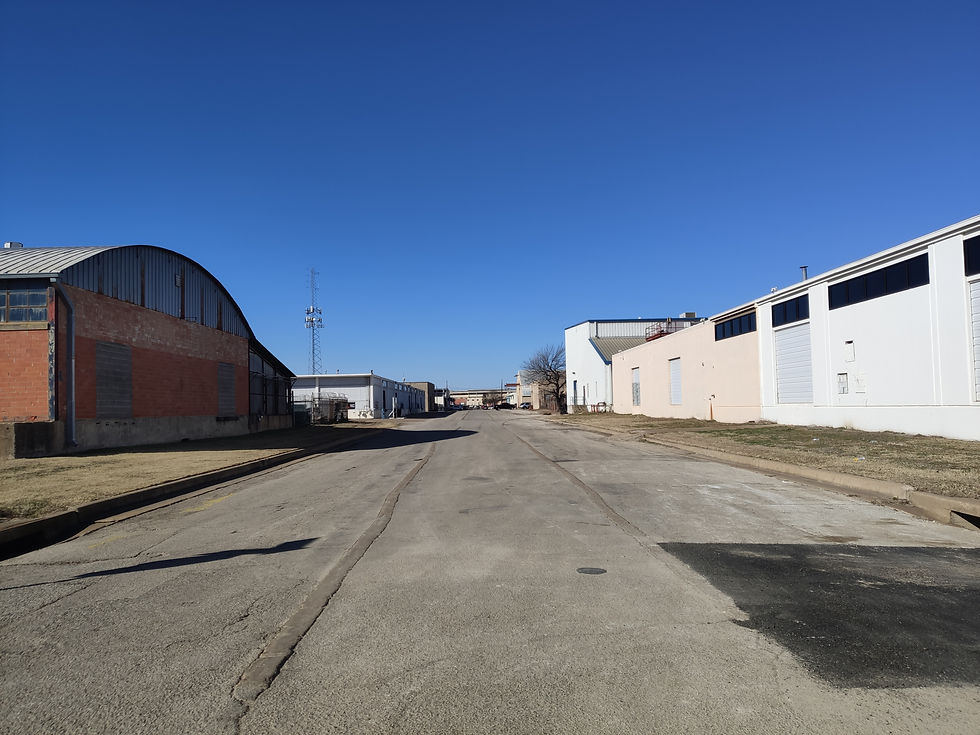
Fort Worth has a system of numbered streets and avenues, but it isn’t a grid and numbers are constantly being skipped. This makes navigating in the city difficult, but we prevailed and found our way to the city’s famous stockyards. In high season, thousands of heads of cattle are sold here, but the twice-daily cattle drives have also become a major tourist attraction. Trying to reach the cattle drive, we somehow found our way into some empty cowpens and had to climb some fences to get out, only catching the tail end of the drive.
Most of the stockyards district had become a cute touristy area, full of restaurants and cheesy souvenir shops. The others had a second breakfast while I visited the livestock market building, which looked like the set of a Texan remake Lawrence of Arabia. Fort Worth unfortunately was also the end of the line for Akeel, who had some family matters to attend to back east. We departed unceremoniously on a street corner and he started his long journey to Boston.
Fort Worth is "where the West begins” because it marks the furthest reach of the desert that streches westwards to the Pacific and south into Mexico. The transition out of the city to the west is much more abrupt than coming in from the east, and within a few miles we were already in empty desert. As if to highlight the transition, we passed a place called Café 23:5. A quick online search found the corresponding verse from Psalms: "You prepare a table before me in the presence of my enemies. You anoint my head with oil; my cup overflows.”


Mineral Wells: Jimbo, a Friendly Policeman, and the National Guard
We left the interstate and drove north to the town of Mineral Wells. We were barely 40 miles west of Fort Worth but were fully in the sticks, driving past ranches and flat scrub. Mineral Wells is the site of Fort Wolters, formerly the largest training base for the U.S. Army and a German POW camp during World War II. The site is now used as an industrial park and as a training facility for the Texas National Guard, but part of the old base remains, preserved in excellent condition thanks to the desert conditions. We visited several old barracks that used to house trainees, the plumbing and canteens still visible between the vast halls that used to be full of cots. There were National Guardsmen milling about, but they looked very fresh-faced and nobody paid us much attention.
We had lunch at Woody’s, a BBQ place that hit so many “small-town bar" stereotypes it almost seemed like a set from a movie. The desert sun was shining bright outside, but inside the hangar-like building it was dim, with lots of the light coming from the neon signs hanging everywhere. The place claimed to have the best burgers in Texas, and they were very good, but the people-watching was so much better. We were the only males without baseball caps, everyone looked very rough and seemed to know each other, and several people were smoking, which was definitely a first for me in the U.S. One of the men at the table nearest ours was complaining loudly that “Jimbo” was overcharging him for bridles and “didn’t know how to work with leather.” I almost died of laughter at multiple occasions.
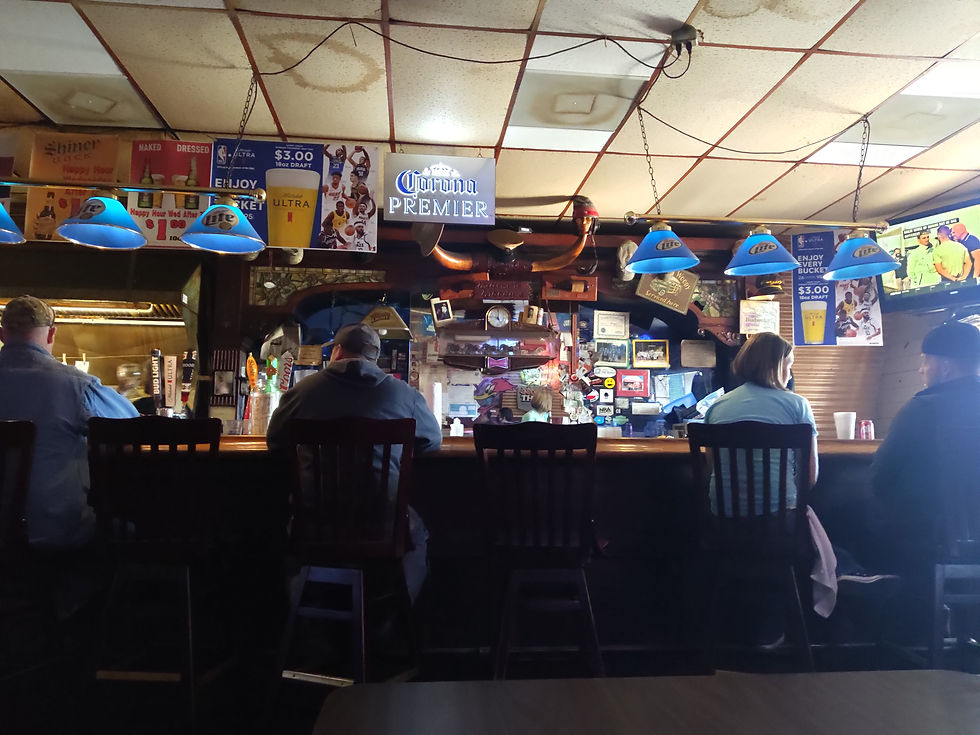
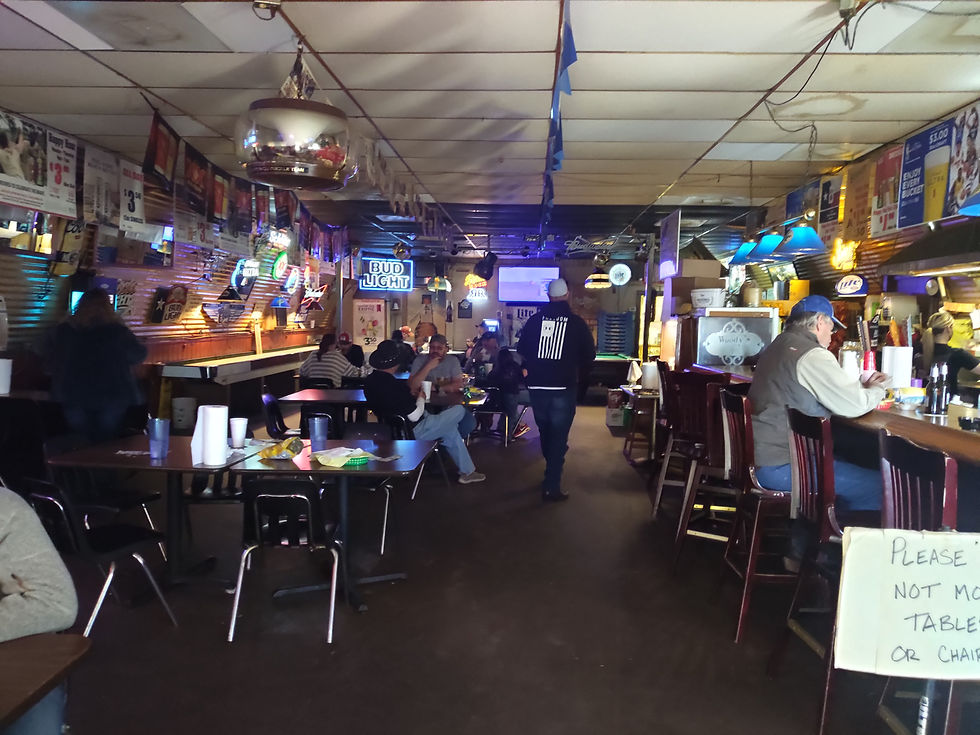
Driving back to the interstate, we passed a state trooper who immediately turned around and pulled us over for speeding. Enter Officer French of the Texas Highway Patrol, who seemed more interested in making conversation with us than in our traffic violation. The abridged version of our conversation went something like this:
“Where are y’all coming from?”
“Mineral Wells and before that Dallas. Well actually from Miami, we’re on a road trip."
“Road trip, huh? Sounds like an expensive trip. How do y’all know each other?”
“We go to school together.”
“Oh yeah? Where?”
Uh-oh. “We go to Yale.”
“Yale, huh? Must be pretty smart to get in there.” We were all sure he would make a snarky remark along the lines of “smart enough not to speed”, but astonishingly he didn’t go for it. He let us off with a warning and wished us a good trip. Honestly, we were speeding, but it seemed like he only pulled us over because he knew a Tesla with Florida plates would make for an interesting time.
We got back on the interstate and made a brief stop in the city of Abilene. This part of Texas was settled by large numbers of Czech immigrants and as such is famous for kolaches, a Czech pastry. It already being mid-afternoon, most of the bakeries were closed, but we did find one that was open. The bakery ended up being a very bizzarely-decorated donut shop owned by a Vietnamese family and kolaches were definitely not their specialty. We were mightily disappointed.

We chased the sun westward through the completely featureless desert, stopping only to charge in the town of Sweetwater, where Jake ate the local specialty - a fried lemon pie that was much worse than it sounded. The gas station we were in had statues of cows out front and an old fire truck, so we climbed on both while we waited for the car to finish charging. The wind was even fiercer out here and sent us ducking back into the car.
We passed Colorado City, Texas, and made a very underwhelming crossing of the Colorado River at sundown, comforted by the fact that we would cross paths with the river again, many hundreds of miles upstream. As we pushed further west, the night sky began to be illuminated by more and more small fires. We took the first few to be campfires, but when they began to appear more frequently we realized they were oil wells. We were now in the Permian Basin, Texas oil country. We had dinner in an Indian restaurant strangely located in the breakfast room of a hotel and went to sleep in the town of Odessa after a long day of driving.
Geological Pride
The Permian Basin is a strange place. Since production began in the 1920s, 29 billion barrels of oil and 75 billion cubic feet of natural gas have been extracted from it, making it by far the largest hydrocarbon production area in the U.S. Odessa, where we spent the night, is the epicenter of production, along with nearby Midland. Everywhere you look, you see oil. Pumps can be seen along the highways and even in some yards, moving up and down in a rhythmic motion. I’ve never seen such pride in a geological feature before. The local University of Texas is named after the Permian Basin, as are shops, clinics, even the Indian restaurant we ate in (“A Taste of India - Permian Basin”).

The UTPB campus feels empty, but one place still drew us. Nestled among the athletic facilities is a replica of Stonehenge made of local stones, providing just the right amound of weird. As we drove west, the oil pumps grew less dense and the desert gradually got less flat.

The sun was fierce, but only on the left side of the car, so I thought I might get a lopsided tan, but I was thrilled when the car’s thermometer hit 72˚ as we stopped to charge in the town of Van Horn. I decided to celebrate by getting a McFlurry, and as we sat down two Hispanic women came in and started complaining to the manager in Spanglish that ICE wasn’t letting them go to Mexico. It was a good reminder that the southern border was getting closer with every mile, and one that was repeated when we drove through a Border Patrol checkpoint on the highway that had the highest concentration of CCTV cameras I’ve ever seen.

The desert scenery got more beautiful the further we drove so we pulled off the highway at a random exit to explore. The mountain road we had seen on the map was actually a private road on a ranch, but the other direction had a good dirt path to follow. We drove until the going got rough and saw we were right by the railroad tracks, which was always a good photo opportunity. The highway offramps had cowguards on them, which was simply a new level of rural.
We reached the Rio Grande valley and started tracking the Mexican border. We left the highway with the goal of getting as close as possible to the border, driving down dirt roads and through suprisingly lush fields. We passed a Border Patrol vehicle running surveillance at the border below, but they just waved at us as we drove by. We turned down a gravel path, past some construction equipment, and along an irrigation canal until finally we could see the border fence, a dark gash looming high about 200 feet away from us, but mostly obscured by the vegetation that was growing in the valley. We were on a narrow towpath following a very narrow canal, but eventually found a spot that was wide enough to allow us to turn around and head back to the highway towards El Paso, 50 miles to the northwest.
El Paso is one of those places that make you think about what it really means that a place is in the U.S. The Mexican city of Ciudad Juarez is literally a stone’s throw away, both downtowns nearly facing each other across the Rio Grande. The border is bisected by half a dozen bridges in the city, but the border fence is a scar across the landscape, cutting the vast cityscape into two. In terms of population, the cities aren’t terribly different, with Hispanics making up a full 83% of the population on the Texan side. To remind you that you’re in Texas, though, there are massive highways cutting across the city and over into Mexico.

El Paso: The Sonoran Settlement
We drove through the city to its northern suburbs, just shy of the New Mexico state line, where a classmate of ours named Emily lived. Her parents were beyond hospitable, but we had places to be before the sun set. We left our car to charge in their garage and Emily drove us up the mountain that splits El Paso into two. Driving up, I couldn’t shake a distinct feeling of déjà vu, until it hit me: El Paso looked like an overgrown Israeli settlement in the West Bank. The sand-colored single-family homes in the affluent white neighborhoods on the mountainside looked just like settlement architecture, and the massive ring of shanty towns in the valley, extending to both sides of the river didn’t look too different from Palestinian towns, especially on the Mexican side where the jumbled favelas suggested building codes weren’t really a thing. The enormous fence stretching across the landscape in both directions, lit up with floodlights and patrolled by SUVs, certainly added to the effect.
We got stuck behind a slow-moving party bus going up the mountain and missed the sunset proper, but still caught beautiful views of the sorbet-colored skies and the international metropolis. The real gem was a huge mural made of rocks on a hillside across the border reading “la biblia es verdad, lea la” The Bible is true, read it.
The obvious choice for dinner was Mexican food, even though we had had Mexican for breakfast in Odessa. Emily recommended a place and it was downright incredible. The wait staff was impressed by our trip and did their best to justify the 4,000-mile journey to the western tip of Texas, and they certainly succeeded. Richard introduced me to mole, a Mexican sauce made of fruit, nuts, and spices and typically served on chicken. It’s certainly an acquired taste, and even the waiters raised an eyebrow when he ordered it. We said goodbye to Emily and picked up the car, which in our 2 hour absence had recovered only 2% of its charge.



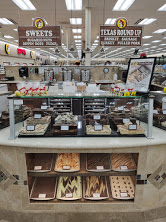
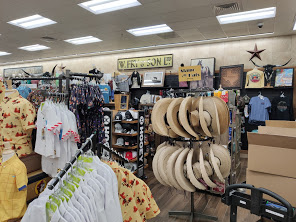







































Comments